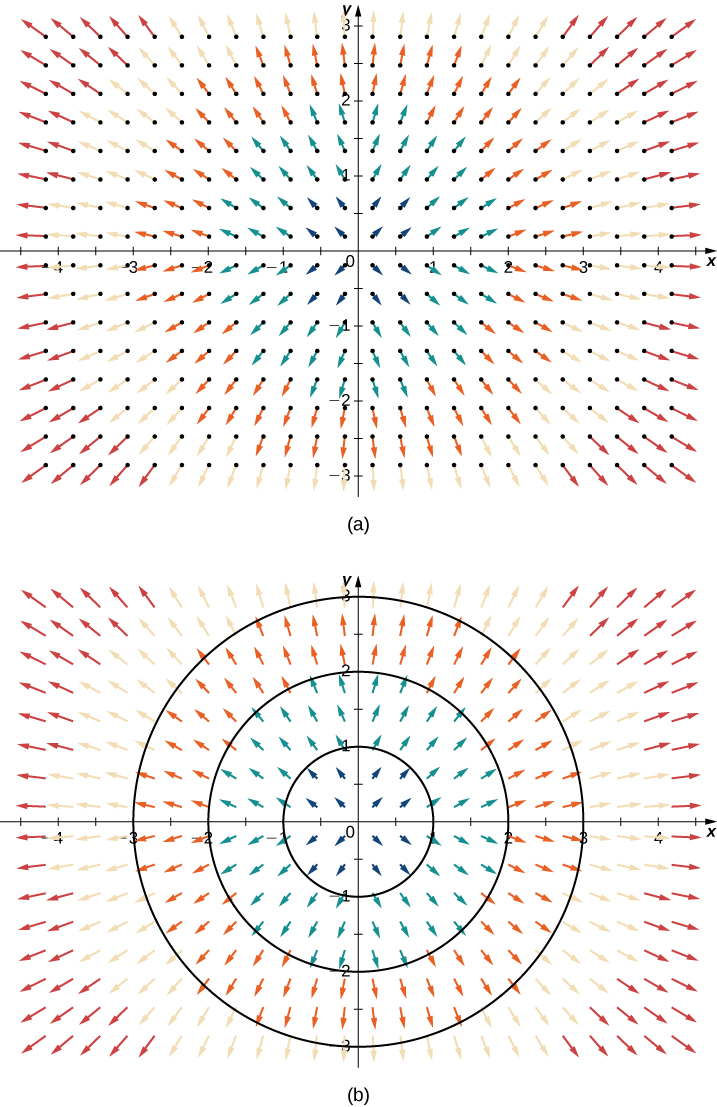| << Chapter < Page | Chapter >> Page > |
Let be a vector field in What vector is associated with the point
We can now represent a vector field in terms of its components of functions or unit vectors, but representing it visually by sketching it is more complex because the domain of a vector field is in as is the range. Therefore the “graph” of a vector field in lives in four-dimensional space. Since we cannot represent four-dimensional space visually, we instead draw vector fields in in a plane itself. To do this, draw the vector associated with a given point at the point in a plane. For example, suppose the vector associated with point is Then, we would draw vector at point
We should plot enough vectors to see the general shape, but not so many that the sketch becomes a jumbled mess. If we were to plot the image vector at each point in the region, it would fill the region completely and is useless. Instead, we can choose points at the intersections of grid lines and plot a sample of several vectors from each quadrant of a rectangular coordinate system in
There are two types of vector fields in on which this chapter focuses: radial fields and rotational fields. Radial fields model certain gravitational fields and energy source fields, and rotational fields model the movement of a fluid in a vortex. In a radial field , all vectors either point directly toward or directly away from the origin. Furthermore, the magnitude of any vector depends only on its distance from the origin. In a radial field, the vector located at point is perpendicular to the circle centered at the origin that contains point and all other vectors on this circle have the same magnitude.
Sketch the vector field
To sketch this vector field, choose a sample of points from each quadrant and compute the corresponding vector. The following table gives a representative sample of points in a plane and the corresponding vectors.
[link] (a) shows the vector field. To see that each vector is perpendicular to the corresponding circle, [link] (b) shows circles overlain on the vector field.

In contrast to radial fields, in a rotational field , the vector at point is tangent (not perpendicular) to a circle with radius In a standard rotational field, all vectors point either in a clockwise direction or in a counterclockwise direction, and the magnitude of a vector depends only on its distance from the origin. Both of the following examples are clockwise rotational fields, and we see from their visual representations that the vectors appear to rotate around the origin.

Notification Switch
Would you like to follow the 'Calculus volume 3' conversation and receive update notifications?